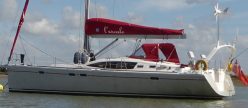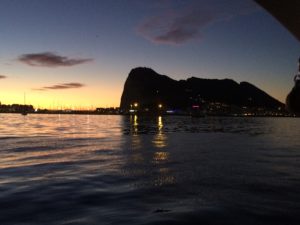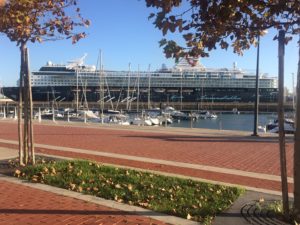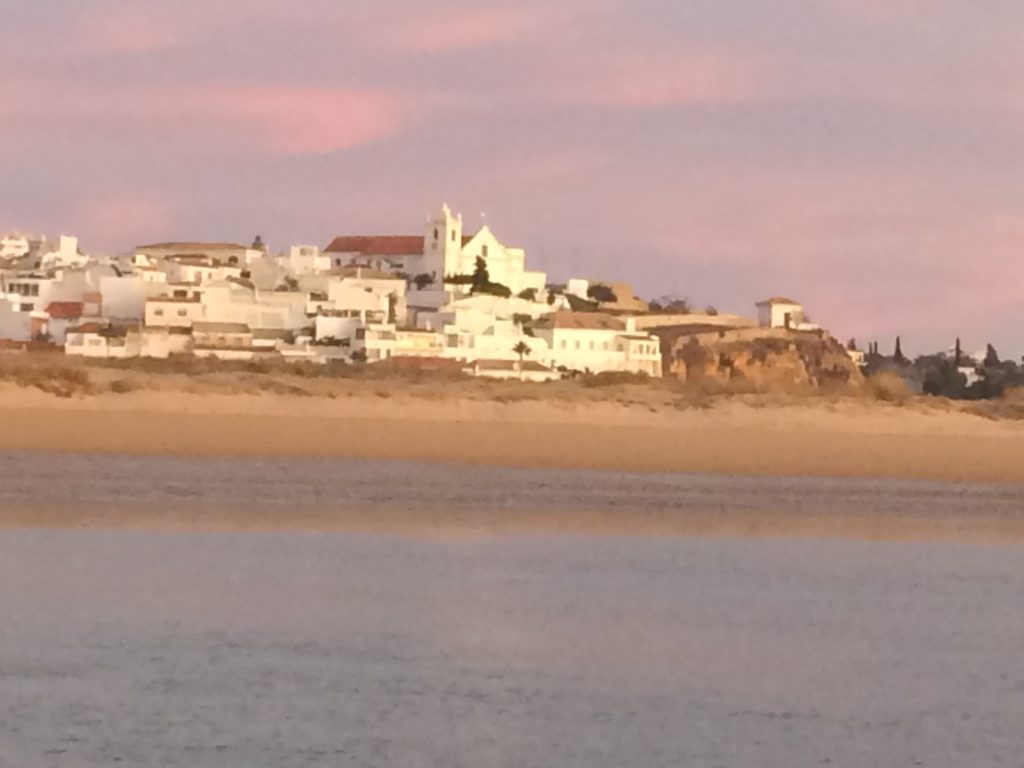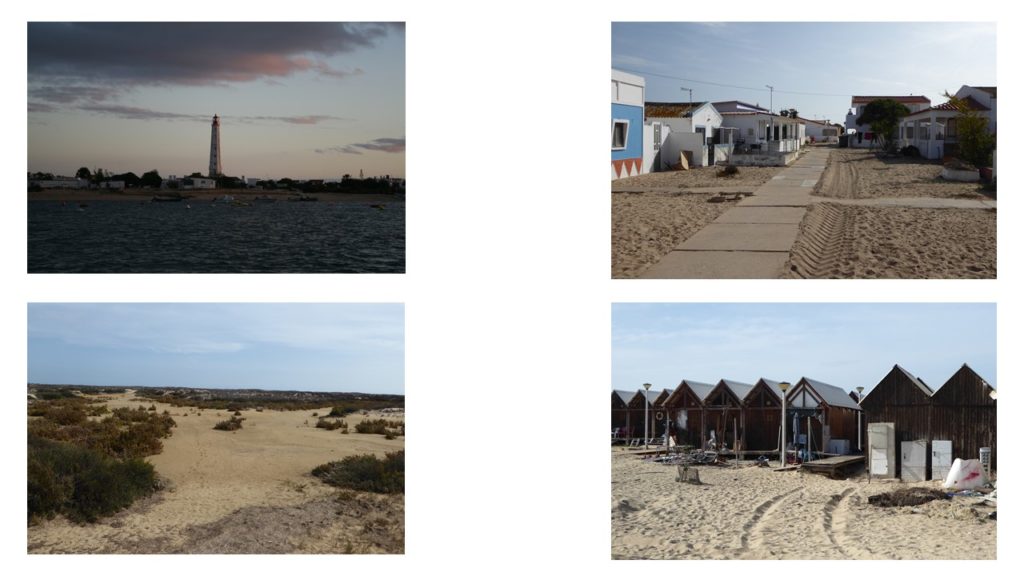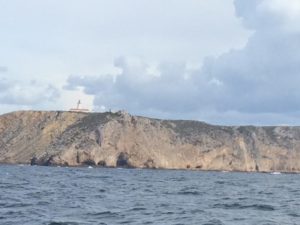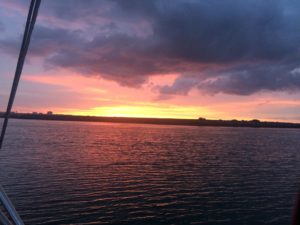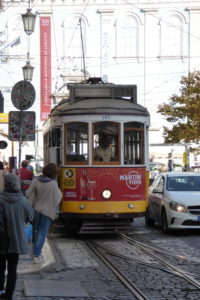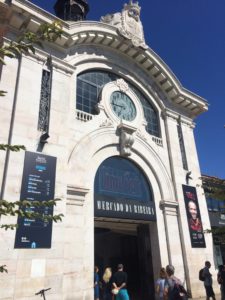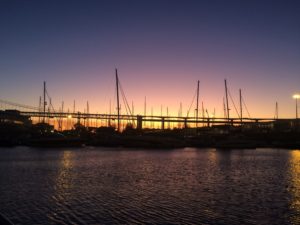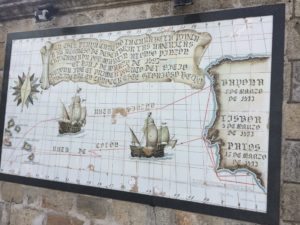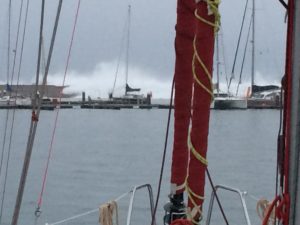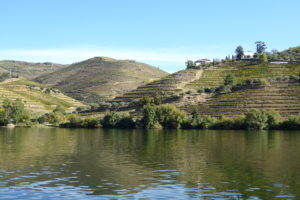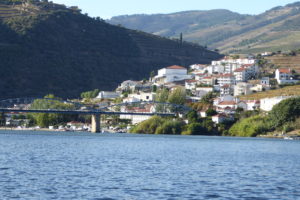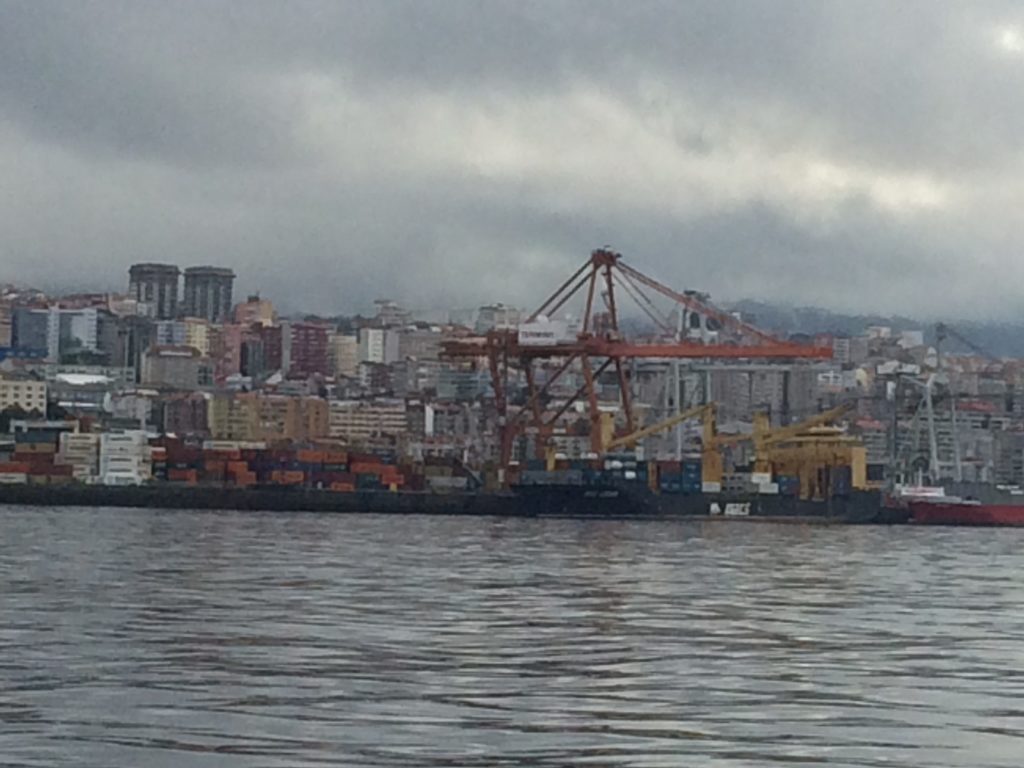December 2019
No sooner had we settled into Queensway Quay Marina, the Southwestern-most of the public berthing areas on the East side of the Rock, than Mate jumped onto a plane for a two-week visit to the UK, leaving warm sunshine and 23˚C. A week later, Skipper left 17˚C and heavy rain to join her.
We returned to the boat together, and have since enjoyed exploring this curious British outpost at the Southern-most point of Europe. One pleasantly warm sunny day, we walked up paved roads into the Nature Reserve that is the Upper Rock, paid our £5 each entry fee, and admired the Pillar of Hercules, the pair of which is the peak of Jebel Musa across the Strait of Gibraltar on the North African skyline. Together they form the gateway into (and out of) the Mediterranean Sea. We marvelled at the views towards Spain from the ridge line along the top of the Rock, and stood gazing across a stretch of sparkling water at Africa, the Atlantic, the Med and Europe stretching away to the North.
Warned by amusing road signs, we kept our eyes peeled for signs of local wildlife, and were rewarded with sightings of lizard, butterflies, ‘tête-a-tête’ narcissus growing wild everywhere, and…yes, all of a sudden, the famous Barbary Macaque tailless monkeys. Much as Mate is uncomfortable observing wild animals confined to cages in zoos, the reality of being right in among these strong, wily and unpredictable creatures is more than a little unnerving. They are completely unfazed by the proximity of their human cousins, out for what they can snatch from uncautious tourists, and rather threatening in their speed, strength and bared teeth. One leapt onto the rucksack on Mate’s back, its weight and unexpected attention surprising her, but thankfully it soon sought more lucrative pickings elsewhere.
The path back down into town from the Northern end of the ridge is steep and covered in loose stones in places; the total distance covered was 12km! There are several alternative routes up on the high ground, and the opportunity to visit a number of points of interest, but each entry into the Reserve would cost £5, and there is really no other walking away from busy roads and built up (literally: most of Gib is high-rise blocks) urban ‘scenery’.
Routine provisioning is mainly in Morrisons, that well-known British export. We have learned to time visits for when they’ve just emptied wagons driven overland from the UK, as stock disappears swiftly and replenishing is unpredictable. A Spanish Eroski supermarket just this side of the frontier carries a good selection of Waitrose products, so all is not lost. Our bikes have proved invaluable here, for this task, and also to explore the rest of the peninsular at sea level. One ride took us South on the West coast, along two tiny ‘beaches’ and through two short and one longer tunnel – not a pleasant experience to cycle even without much traffic. We emerged between one of the city’s mosques and the university: sports sciences department, including a rugby ground; students wishing to study anything else travel to the UK, having been educated up to age 18 according to the British system, including the wearing of school uniforms.
The goal of our visit was the lighthouse at Europa Point, and we also came across the Sikorski memorial, to a Polish Prime Minister in exile who died on 4 July 1943 when his plane crashed into the sea near Gibraltar’s runway; only the pilot survived of sixteen others aboard. After some moments of quiet reflection, we followed Europa Road uphill, past the Rock’s institutions for mental health and dementia, built high on the cliffs with amazing views of the Bay and sunsets. We found another entrance to the Reserve near the small Catholic church dedicated to St Bernard, the patron saint of Gibraltar, and the ‘Glen Rocky Distillery’, once a water treatment works in a deep cleft of the rock. We wound our way carefully down steep roads around many military buildings, eventually completing our circuit back at the marina.
On Christmas Day, we took advantage of almost no traffic (there is very little cycle safety provision here) to ride North and East, around the inland edge of the Rock, past the quiet airport and runway, to Eastern Beach and the pretty village of Caleta. Although in the shade of the Rock for much of the day at this time of year, the beach here is clean and attractive, and backed with a few terraced restaurants, a cluster of colourful Italian-style villas clinging up the hillside, for this is known as Little Genoa, and each property is named for an Italian town. Centuries ago, this was one of the landing places of the Phoenicians, and it retains a strong sense of community today.
It is not possible to circumvent the whole Rock on foot (at sea level) or pleasant to do so by bicycle, as a longer tunnel, too low for even single decker buses, pierces the Southeast flank, in the area of the UNESCO heritage site of Gorham’s Cave, where evidence of Neanderthal habitation has been discovered. On the way back around the North end of the Rock, therefore, we found the main cemetery, a multi-faith burial ground with an interesting history of its own. The separated Jewish cemetery is solemn, understated and serene, a stark contrast to the typically flamboyant Catholic tombs and the simple white crosses that mark war graves. As elsewhere around the Rock, the lack of subsoil is very obvious, as the majority of the memorials sit very much above ground.
Thanks to the veritable fountain of useful information that is Mate’s new friend Lorna, a Glaswegian honorary Gibraltarian, we have indulged in a range of culture during our time here, including an unforgettable evening in St Michael’s Cave for the 7th International Jazz Festival in the company of the best saxophonist we’ve ever heard, an Italian by the name of Stefano Di Battista, accompanied by his trio of extremely talented musicians. The warm-up acts were local artists Levanter Breeze and Surianne Dalmedo.
A month later we enjoyed the European Sinfonietta at John Mackintosh Hall, performing a delightful repertoire of Mozart and Strauss. In between we have made several visits to the cinema, hidden in the King’s Bastion that has been cleverly converted into a leisure centre housing various entertainments including an ice rink and bowling alleys. We saw the live streamings of the concert version of Les Miserables and the ballet, Coppélia, and also enjoyed Cats and Little Women.
We have crossed the border into Spain on a number of occasions, to visit the market in La Línea (de la Concepción), where we partook of a Spanish custom, a glass of local sherry with a small tapa of cheese – before lunch – and for Skipper to try to source various items of chandlery, usually more successfully than here in Gib. There is also a branch of the French supermarket, Carrefour, within cycling distance.
Epiphany, Twelfth Night, 6 January, is an important festival in the Spanish calendar, and was celebrated here with a cavalcade of carnival floats, flatbed trucks decorated in a variety of themes and accompanied by a cacophony of music and a marching band. The winning floats were a Harry Potter – Hogwarts theme, and a Save the Planet message. The cavalcade gathered in Casemates Square before processing along Main Street to ‘deliver’ the Three Kings, Balthazar, Caspar and Melchior, suitably regal on red velvet thrones, to the Anglican and Catholic cathedrals in turn. Mate has enjoyed regular Sunday morning church services in English once again, and a lovely Midnight Mass on Christmas Eve in the company of our new sailing friends.
Exactly a month after we tied up in our new home, berth A4 in Queensway Quay, an unusual Ovni 455CC arrived to slot in two spaces from us; unusual because only seven of these centre cockpit boats were built. Tendrel-Aurelie is the same length as us, and being an Ovni is built of aluminium, like us; her hull is not chined, but curved smoothly like ours. Dörte and Jens, a German couple based in Kiel, have matured from delightful acquaintances to good friends, who generously hosted a pot luck supper on Christmas Eve. During this we were introduced to their Swiss friends, Manuela and Christian on steel boat Svala. They’d met in Portugal, and followed the route to overwinter on the brink of the Mediterranean. We took our turn to host another pot luck supper on New Year’s Eve, before wandering down to the waterfront to enjoy extended firework displays up and down the Rock and around the bay into Spain.
In case this sounds like just an(other) extended holiday, Skipper has squeezed in the fitting of a watermaker, including a successful test run. Safely into a new year and new decade, 2020 started busy and has yet to let up. Suddenly we’re preparing for a visit from London friends, she newly retired and keen to experience a new destination for a weekend break, followed closely by time with both our children one after the other as we begin a new season along the Andalucian coast.
Happy New Year!
